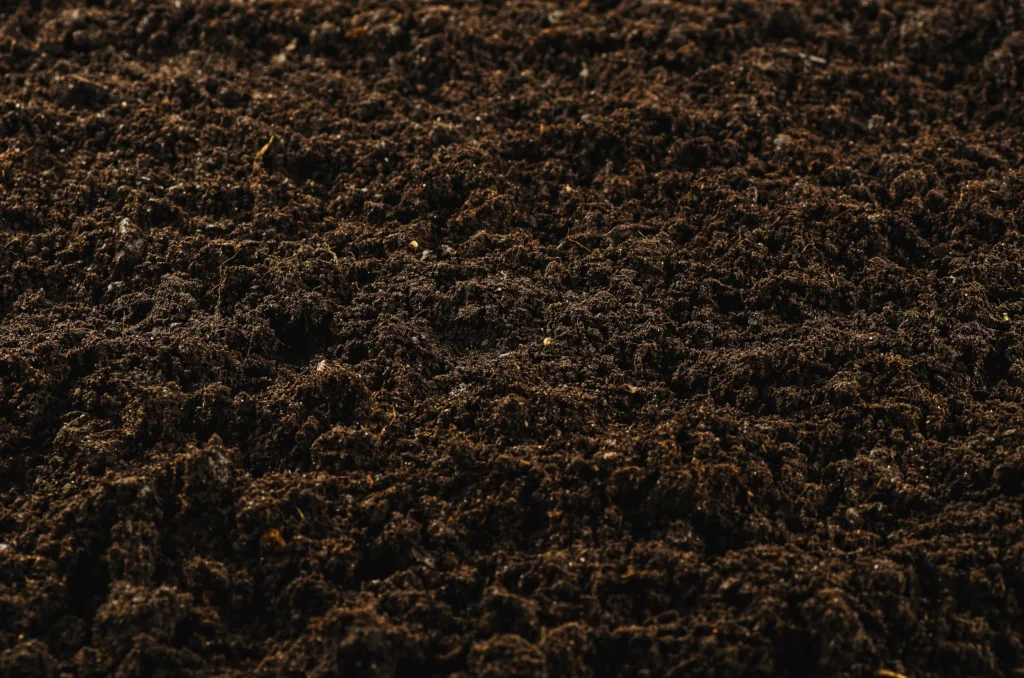Carbone activé pour le sol
.webp)
Buy Activated Carbon For Soil
Les défis de l'industrie
Dosage Optimization Complexity
- Optimizing and calculating effective application rates is challenging due to variations in soil type and contamination.
- Under-application does not effectively immobilize pollutants while over-application may lead to disruption of microbial community and soil structure.
Material Consistency Problems
- Performance can be inconsistent across technologies/AC Typically have variations in their biological material or coal bio source as well as variations in their manufacture methods.
- This variation may impact adsorption and relative reliability to affect contaminants and nutrients in various soil environments.
Potential Negative Ecosystem Effect
- AC can also potentially adsorb beneficial organic matter and nutrients which can change microbial processes and alter biogeochemical cycles.
- The alkalinity of the AC may also alter pH leads to further alter sediment and soil function as well as plant growth in sensitive soils.
Challenges with Uniform Distribution
- Uniformity of distribution on a scale that would be useful in a field application remains a technical challenge.
- This is also true for in situ remediation where the soil mixing depth and thoroughness impacts treatment effectiveness.
Long-Term Stability
- Challenges with scale-up and the new chemically modified AC have unknown field longevity and stability.
- How long surface modifications endure will be validated as well as how long the adsorption capacity lasts.
types de charbon actif apparentés
-r8fslg51nt6wgjtvh6yldxb1gtkgm3lpe0oq1akgog.webp)
- Valeur en iode : 600-1200
- Taille des mailles : 1×4/4×8/8×16/8×30/12×40/20×40/20×50/30×60/40×70 (autres tailles sur demande)
- Densité apparente : 400-700
-r8fsli0q1h9h3rr567ruiwtynlb71ht629zozuhoc0.webp)
- Valeur de l'iode : 500-1300
- Taille des mailles : 0,9-1mm/1,5-2mm/3-4mm/6mm/8mm(autres tailles sur demande)
- Densité apparente : 450-600
-r8fslbfupn0gui0p8mxgjghqhw7mjm31pdfamwrfjk.webp)
- Valeur de l'iode : 500-1300
- Maillage : 150/200/300/350 (autres dimensions sur demande)
- Densité apparente : 450 - 550
-r8fsle9da54btbwls65c8xs4a1tq6pe8prdr2qn90w.webp)
- Valeur en iode : 400-800
- Taille des mailles : 100×100×100mm/100×100×50mm (densité cellulaire personnalisée sur demande)
- Densité apparente : 350-450
- Diamètre de l'alésage:1.5-8mm

- Indice d'iode : 700-1200 mg/g
- Surface : 700-1200 m²/g
- Densité apparente : 320-550 kg/m³

- Indice d'iode : 700-1200 mg/g
- Surface : 700-1200 m²/g
- Densité apparente : 320-550 kg/m³

- Indice d'iode : 700-1200 mg/g
- Surface : 700-1200 m²/g
- Densité apparente : 300-650 kg/m³

- Indice d'iode : 700-1200 mg/g
- Surface : 700-1200 m²/g
- Densité apparente : 320-550 kg/m³

- Méthode d'activation : Activation par vapeur/gaz à haute température
- Structure des pores : Dominée par les micropores, distribution uniforme des pores
- Profil environnemental : Sans produits chimiques, faible teneur en cendres
- Applications principales : Adsorption en phase gazeuse, purification de l'eau potable

- Méthode d'activation : Activation chimique (par exemple, H₃PO₄/ZnCl₂) à des températures modérées.
- Structure des pores : Riche en mésopores, surface plus élevée
- Efficacité du processus : Temps d'activation plus court, rendement plus élevé 30-50%
- Post-traitement : Lavage à l'acide nécessaire pour éliminer les résidus

- Fonctionnalisation : Chargé d'agents actifs (par exemple, I₂/Ag/KOH)
- Adsorption ciblée : Amélioration de la capture de polluants spécifiques (par exemple, Hg⁰/H₂S/gaz acides).
- Personnalisation : Optimisation chimique pour les contaminants ciblés
- Applications principales : Traitement des gaz industriels, protection CBRN
Pourquoi utiliser notre charbon actif

Consistent Performance Quality:
Our activated carbon maintains uniform pore structure and adsorption capacity across batches for reliable soil remediation results.

Enhanced Environmental Compatibility:
Specially engineered surface chemistry minimizes unintended impacts on soil nutrients and microbial ecosystems.

Long-Term Stability Assurance:
Modified carbon matrix ensures persistent contaminant binding and soil structure benefits through changing environmental conditions.

Sustainable Production Process:
Utilizes renewable feedstocks and energy-efficient activation methods for reduced ecological footprint.

Optimized Contaminant Targeting:
Customizable functional groups provide superior immobilization of specific pollutants like heavy metals or organic compounds.
Processus et technologie
1. Remediation of Arsenic Contamination in Paddy Soils
Aperçu de la solution
Activated carbon (AC) is applied to arsenic-contaminated paddy soils to immobilize arsenic by adsorbing dissolved organic matter (DOM), which mediates microbial reduction of iron oxides and subsequent arsenic release.

Principaux avantages
- Simultaneously reduces arsenic bioavailability in rice grains and suppresses methane emissions by disrupting DOM-driven electron shuttling
- Decreases dimethylarsenate accumulation in crops through long-term porewater DOM reduction - Enhances soil redox stability without introducing secondary contaminants
- Enhances soil redox stability without introducing secondary contaminants
- Maintains rice productivity while mitigating arsenic translocation to edible parts
2. Heavy Metal Stabilization in Polluted Soils
Aperçu de la solution
Chemically modified AC (e.g., sulfur-doped, phosphate-enhanced, or metal oxide-coated) immobilizes heavy metals like cadmium (Cd) and lead (Pb) through surface complexation, precipitation, and ion exchange.

Principaux avantages
- Creates stable metal-carbon complexes via functional groups (e.g., sulfhydryl, phosphate) to reduce phytoavailability
- Synergistically improves soil fertility by retaining nutrients (e.g., phosphorus) while immobilizing toxins
- Modifies microbial community composition to favor metal-resistant taxa and reduce metal uptake by plants
- Maintains long-term stability of immobilized metals under varying soil moisture conditions
3.Physical Structure Improvement in Cohesive Soils
Aperçu de la solution
AC enhances pore network connectivity in compacted clayey soils by acting as a physical scaffold, increasing macroporosity and hydraulic conductivity.

Principaux avantages
- Improves soil aeration and water infiltration through formation of interconnected macropores
- Reduces soil bulk density and mechanical resistance to root penetration
- Enhances gas diffusion and moisture retention capacity in arid or waterlogged soils
- Increases resilience to compaction in intensively managed agricultural soils
4. Soil Carbon Sequestration and GHG Mitigation
Aperçu de la solution
AC incorporation enhances long-term soil organic carbon storage and reduces greenhouse gas (CO₂, N₂O, CH₄) emissions by altering microbial respiration pathways.

Principaux avantages
- Promotes stable carbon pool formation through physical protection of organic matter
- Suppresses methanogenesis by competing for electron donors in anaerobic microsites
- Reduces nitrous oxide emissions by adsorbing nitrogen substrates used in denitrification
- Lowers global warming potential of agricultural systems without compromising crop yield
5. Sustainable Waste-Derived Amendments
Aperçu de la solution
AC produced from agricultural waste biomass (e.g., date palm seeds, cashew residue, sludge) offers an eco-friendly soil amendment that repurposes organic waste streams.

Principaux avantages
- Utilizes circular economy principles by converting waste into value-added soil enhancers
- Tailors pore structure and surface functionality via feedstock selection and pyrolysis conditions
- Minimizes environmental footprint through green activation methods (e.g., sodium oxalate instead of corrosive chemicals)
- Provides dual benefits of waste valorization and soil quality enhancement

